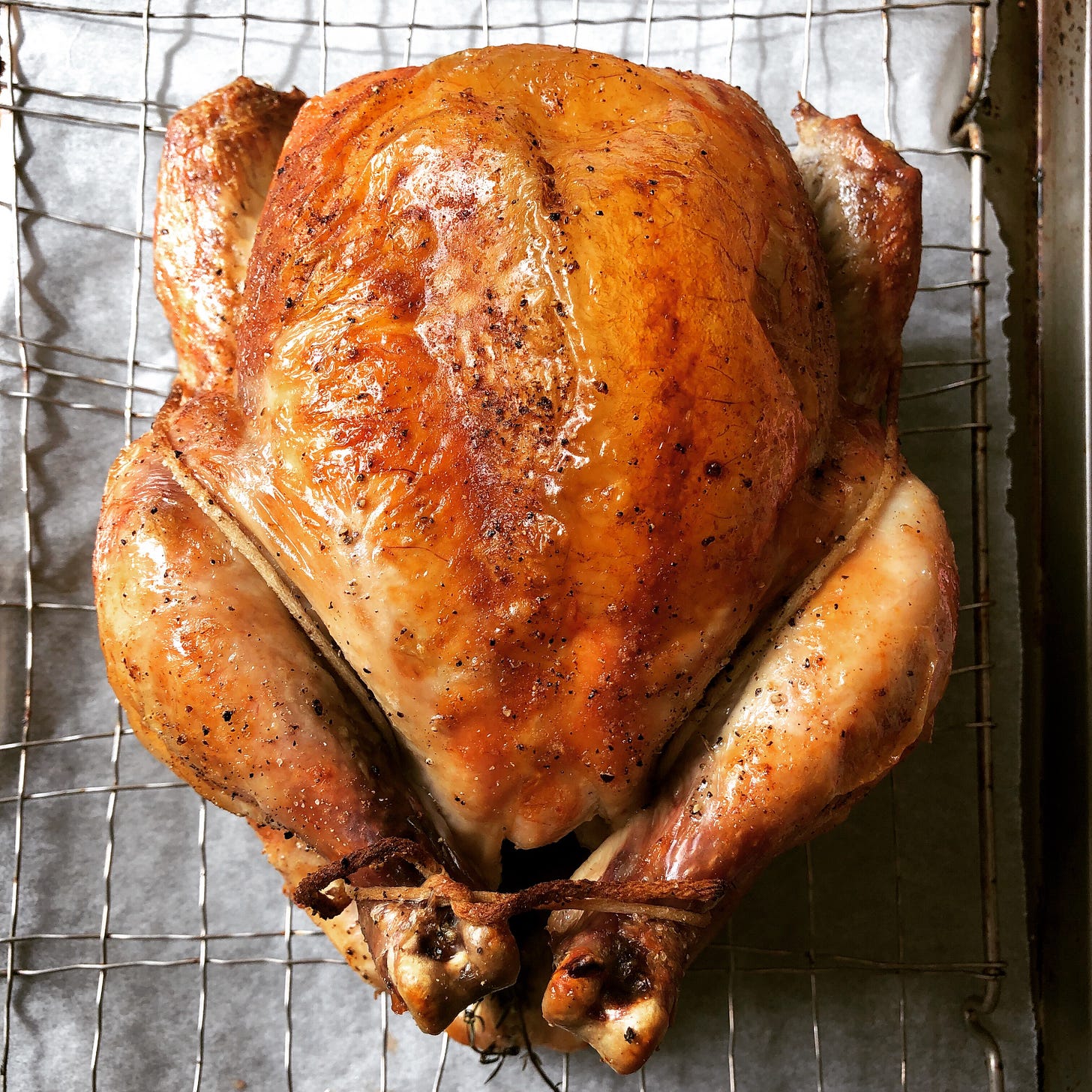The pursuit of the perfect roast chicken has been a lifelong culinary quest. I'm talking about that elusive combination of moist flesh, crisp golden skin, even cooking, and rich flavour. After countless hours in the kitchen, I'm still discovering new nuances.
The beauty of roast chicken lies in its versatility. At its simplest, you can season a bird and toss it into a hot oven for 90 minutes. But the variations are endless: butter-rubbed on the skin or beneath it, herbs tucked under the skin or in the cavity, perhaps with lemon slices for extra aromatics. Some swear by air-drying the bird uncovered in the fridge for two days to achieve that coveted crispy skin, obsessives going so far as to blow-drying the skin. Others champion brining - whether in a traditional wet solution or using the more dry-salt method à la Zuni Café. For those looking for more intense flavours, there's the good ol’ marinade, or even vacuum-sealed marinated birds.
The cooking techniques are equally diverse: high heat versus a cold-start oven, elevated on a rack, or nestled in a pot — covered or uncovered. Some advocate starting breast-down then flipping, while others prefer rotating through different sides. There's spatchcocking (removing the backbone to flatten), or traditional trussing for even cooking. The techniques I learned in culinary school included stovetop browning before roasting, and I’m a big fan of the technique of poaching followed by roasting at high-heat. Even vertical roasting has its merits, whether on a specialized rack or perched atop a beer can in the barbecue. I know these methods intimately because I've explored them all, going so far as to purchase an oven with a rôtisserie setting, and mucking up my oven every time used it. Non merci!
To be honest, I’d say that most of these techniques made little difference and I often end up with an undercooked chicken with skin that lacked the desired golden crispness. With roast chicken, I believe it’s less about the technique you employ, and more about the bird itself. That said, I have come to some conclusions such as browning a chicken before roasting works very well, high heat works better than low, and any recipe that calls for a chicken roasted for one hour to an internal temperature of 155º F/68°C is written by someone who likes their dark meat underdone. White meat is cooked at that temperature, but for a whole 3 lb (1,5 Kg) chicken, it should be cooked to 170ºF/76°C (thermometer inserted into the thickest part of the thigh) and is even better cooked to 175°F/79°C, which will take between 75 to 90 minutes depending on temperature and the size of the bird.
After dedicating years to perfecting this seemingly simple dish, I'm here to share what I've learned about creating truly exceptional roast chicken, as well as two of my favourite recipes.
Keep reading with a 7-day free trial
Subscribe to Lick my Plate to keep reading this post and get 7 days of free access to the full post archives.




